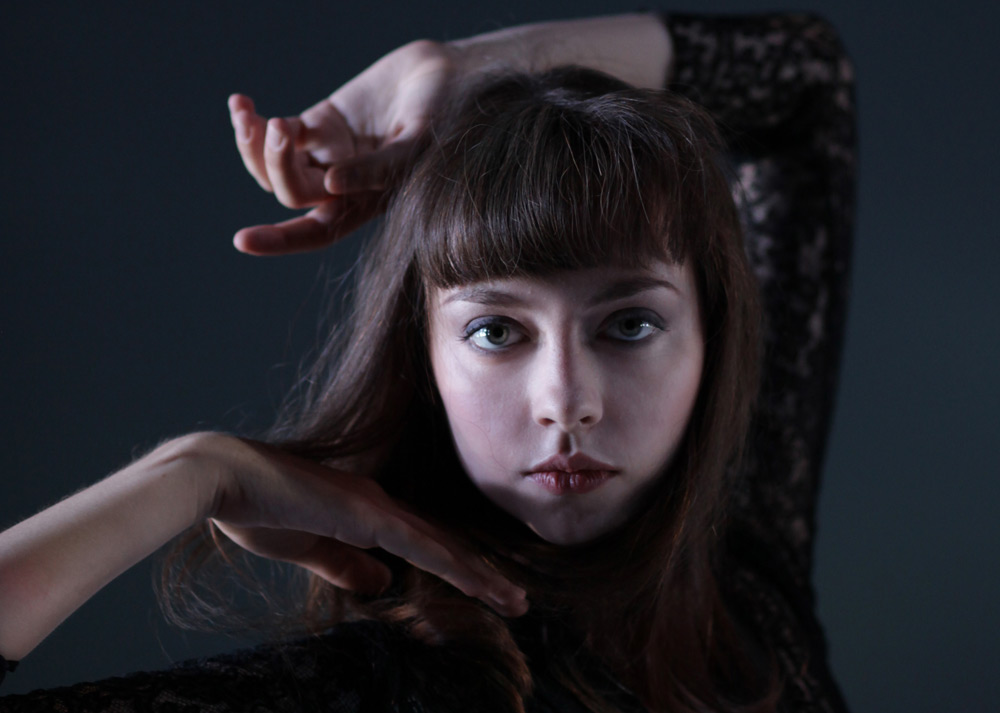Though it may come as a surprise to those who know the renowned French choreographer, it wasn’t actually Angelin Prelocaj’s idea to adapt “Polina,” which tells the story of a young dancer’s development.
“It was really Valerie who wanted to make a fictional film about dance,” says Prelocaj, referring to his wife Valerie Muller, with whom he makes movies. “She had previously made a documentary about dance and was looking for something where she could have more of a narrative, but include dance as part of it.”
The two found such an opportunity in Bastien Vivès’ graphic novel, which tracked the young Polina as she pirouetted from the rigid confines of classical ballet at a Russian dance academy under the thumb of a brusque instructor to the airy studio of a French company whose lead choreographer who is more of the mind that passion leads to skill. Whereas Vivès’ story was told in black and white on the page, Muller and Prelocaj vividly bring out the color in it in expanding “Polina” for the big screen, placing the film on the delicate yet muscular shoulders of real-life dancer Anastasia Shevtsova and watching her joylessly strive for a place in the Bolshoi Academy before blossoming into full flight as she discovers where her interests and her gifts truly intersect. Her evolution isn’t only personal, but reflective of greater soul searching in the artform as a whole of whether to adhere to standards of past perfection or pursue innovation by venturing into uncharted territory.
Given Prelocaj’s own desire to push boundaries as a choreographer, it’s no surprise in which direction the filmmakers show preference in “Polina.” However, it’s the way in which Muller and Prelocaj demonstrate the expansion of the dancer’s horizons, using the widest possible framing at first to capture just how large the nuclear power plants loom in the background as Polina practices routines in the Soviet snow with the weight of the world upon her before the perspective of the camera shifts accordingly with her control over her own destiny, as suddenly the panoramic view is Polina’s rather than the observer’s, able to see as widely as her imagination allows. While the film has an authenticity that’s unmistakable when it comes to dance with such intimacy it can seem like a documentary, the credibility of having actors such as Juliette Binoche (who plays Polina’s cryptic French instructor Liria) and Niels Schneider (as the dancer who lures her to France) help it reach transcendence as a compelling narrative, fusing the two arts together into a cohesive whole. As the film rolls into American theaters after premiering this time last year at the Venice Film Festival, Muller and Prelocaj spoke through a translator about how the cross-pollination of their skills across different disciplines helped create something entirely new and the rigor that went into their own preparation for the film, shot across three countries.

Valerie Muller: The character of Polina is a girl who’s very modern and she wants to be a dancer, yet her character is not the standard cliche of a young girl who wants to be a ballet dancer, and we originally thought we would look for an actress who perhaps had training in the past as a dancer, but this turns out to be very complicated because we did not want there to be any doubling. Every dancer that you see is doing their own dancing and acting, so because of this, we were more restricted in the kind of people we could look at. Many of the actresses had really studied dance too far in their past and what we needed was somebody who had an extremely high level of classical ballet training. So it was a very long process of trying to find someone. We looked in France and in Russia, and all told, it was over 600 dancers we looked at before we chose Anastasia.
Angelin has said that it was interesting to see the dancers and actors rub off on each other on set – did mixing them together create a certain energy?
Angelin Prelocaj: Yes, it was actually quite an amazing level of energy that was created because, for example, you have Juliette Binoche, a great actress who’s at a very high level of her craft, and she was able to impart to Anastasia things from her own experience and technique as an actress while at the same time, Anastasia is a dancer of a very high level, and she was also then able to convey to Juliette some of the things that were important for her to work out as a dancer, so this exchange across disciplines was really very interesting. And it was something then that transferred to the rest of the cast. What’s really interesting when you look at the film towards the end, it’s really hard to tell when you see them dancing who are the real dancers and who are the actors.

Valerie Muller: We actually gave a considerable amount of thought to how we wanted to film the dance throughout the film because we really wanted to film it in different ways. We wanted to show what it means for the dancer to be in the process of learning to dance and the process of dancing itself, so [in the beginning] we used a handheld camera and we really focused on the dancers’ bodies and the way they understood their bodies and reacted with their bodies. It was very detailed camerawork. Then [in the middle] we pulled out and made it a little bit broader to show dance in all its forms, so [when] we have the dance that’s improvised – the dance that’s outside in nature [for instance] – we really had to have a wider shot, which is [comprised of] a lot of traveling shots so that you were no longer in the more detailed world of the forest, but in a much more expanded view. Then finally for us, it was very very important that we show the final performance on the stage, so for that, we wanted the point of view of the dancer, so the camera was mounted on the crane and we shot it in a single shot.

Angelin Prelocaj: Of course, some of the music is just the [ambient] music that was in the nightclubs or in the bar where [Polina] was working, but for the classical pieces and her [dance] piece at the end, we chose to use a Violin Concerto by Philip Glass and what you hear in the film is in the earlier scenes when she’s rehearsing with Bojinski, her dance teacher [in Russia], you hear the piece played, but it’s played on piano, much as it always is in a ballet studio where you have the accompanist playing the piano. But then for the final piece, we hear the same music, but this time, it’s a full orchestra at that point for her [dance] creation and it’s almost as if it’s looking back for Polina, where her piece is being performed on stage, with what she remembered from her time at the studio with her dance master with the same music.
Was it a challenge to show that teacher-student relationship and the impression people had made on Polina without being heavy-handed?
Angelin Prelocaj: This is actually an interesting thing to try to portray and what we show here is not a cliche. This is very true in Russia, even today, that many times for the students in the school, it is a very hard life for them. There is a kind of inherent violence in it, but it’s not overly dramatic. I think this kind of treatment is something that exists even outside of Russia, for example, [at] the Paris Opera Ballet School, and Anastasia studied at the Vaganova Academy [of Russian Ballet], which is a great school in Saint Petersburg, and she said what she herself had experienced in school was far worse than what we were showing on the screen, so it’s not far from reality what you see. it was really approaching reality much more to see this kind of relationship that will exist between the student and the teacher and for the parents to know the teacher has a parental role there.

Angelin Prelocaj: The solo that she does in the film I created especially for her — and with her. She actually worked on it for six months every day for six months so that by the time to shoot it, she was at an extremely high level of being able to perform it. In addition to that, she also spent two weeks with me watching me choreograph because she wanted to be able to act that with truth of what is it to be a choreographer in today’s modern dance world, and we didn’t want to show the 19th century cliche of the choreographer who terrifies the dancers. so that was two weeks of observation that she did with me and my company.
What was it like to coordinate a shoot across Russia, Belgium and France?
Valerie Muller: It was actually quite a strange experience because we shot first in France in the summer, then we shot in Moscow in the winter and then Antwerp was the last place where we shot and it was an extremely enriching experience, not only for the images of the film, but also just to be imbued with that kind of atmosphere of the countries where we were working. For example, when we were in Russia, we really had the sense that we were working with Russian actors and crew and the film is really impregnated with the whole atmosphere. Then it was very important to make that feeling show through in the film.
What has it been like to take it over the world?
Angelin Prelocaj: It’s been quite an enriching experience for us. [laughs] You know we travel around and we’re able to bring the film to a whole variety of audiences and when we go with it, we also bring the message of the film. It’s been very interesting to see how this message is received. The film’s been sold to more than 30 countries and there is a real difference in the perceptions that people have as a reflection of their own culture. This has not only been an enriching experience [in terms of this film], but it’s also been extremely helpful as we look forward to future film projects.
“Polina” is now open in New York on Angelika Film Center and Lincoln Plaza Cinemas and on September 1st in Los Angeles at the Nuart Theatre and Washington DC at the E Street Theater. A full list of cities and dates is here.




